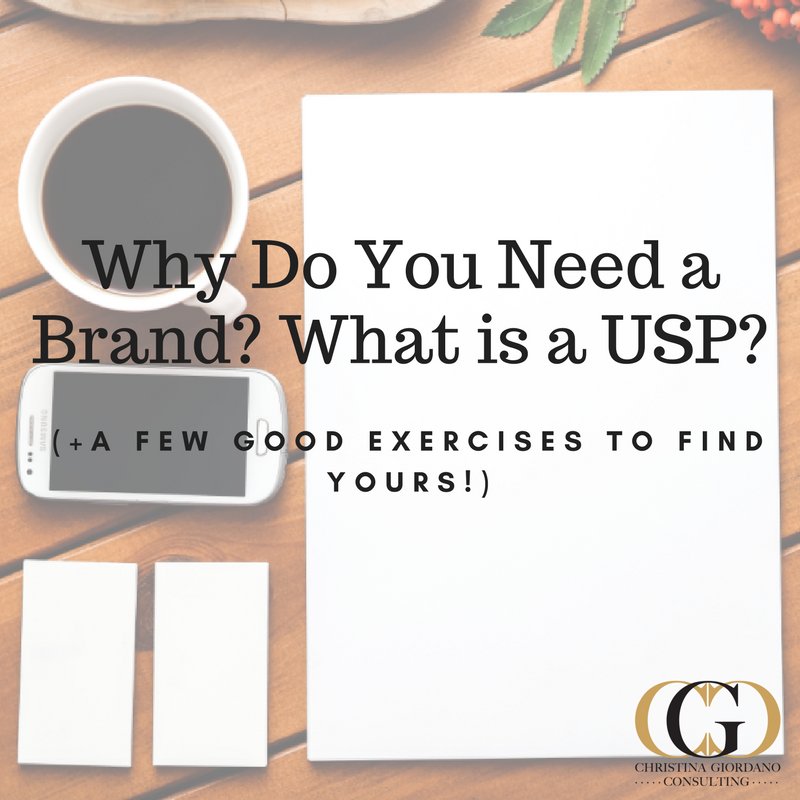Although a brand and a logo go hand in hand, they are not the same. A logo is a business’ identification in its simplest form via a recognizable mark or symbol. On the other hand, a brand is the emotion behind what someone feels, sees and tastes, when they interact with you on any level. It bears much more responsibility than a logo. For small businesses in particular, branding comes down to creating a positive perception through clear, concise and consistent communication.
To do this takes two steps. The first is to decide what you stand for, or what your unique selling proposition is. A unique selling proposition (or USP) is what makes you different from your competition; it’s what sets you apart from the rest.
Let’s look at a USP in a deeper way. If you are a massage therapist, for instance, some questions to ask yourself might include:
1) What type of massage do you specialize in?
2) Do you have other qualifications or certifications, which may be relevant?
3) Do you have other life or career experiences that will give you a better understanding or make you more relatable to specific potential clients?
4) Are you involved in other activities that help to establish you as an expert to your niche market?
5) What about the delivery of your service? Can the experience with you be different than any other experience from beginning to end?
Finding your USP is the first step to establishing your brand. The second step is then making sure that all aspects of your business are in line with these. The goal is to apply your values to everything you do, clearly and consistently.
Exercise #1:
1) List the features and benefits that are unique about your product or service. Think about your competitors and the benefits that you have that set you apart from them.
2) Decide what emotional need is being specifically met by your product or services. Think about this from your customer’s perspective.
3) Identify aspects of your product or service that your competitors cannot imitate. Put a star next to anything that cannot be easily duplicated, reproduced or copied.
4) Now, using the words from steps 1 to 3, create phrases about your unique product or service that are short, clear and concise. Make sure that they can be easily communicated to and understood by your customer.
Exercise #2:
This a fun exercise called The Comparison Game. This exercise is about equating your brand with something else. It’s a quick way to assess your brand’s personality and positioning.
If you’re brand was an animal, what would it be?
You can draw it or write out its traits. This exercise helps you look through a different lens to see new things in your brand. For example, you may dream of being the lion when your brand is more like the lamb. There’s something non-threatening about comparing your brand to an animal, and it can reveal interesting insights.
Exercise #3:
If you found the previous exercises to be challenging, I have another exercise in mind that should be able to help you a bit more. For the exercise, simply complete this contact form: http://www.christinagiordano.com/#contact and in the “Message” box, put “Branding Exercise #3” to receive it within 24 hours!
The goal of these exercises is to come up with a brand message (or an elevator speech) that really conveys who you are and what you do in about 10 seconds or less.
Branding is all about the impressions you make. If you want to succeed, that impression should do two jobs – it should convey what is special about your business and it should show you in a positive light.
Need more help? Check out my 1:1, group and self-study offerings: https://christinagiordano.com/offerings/

